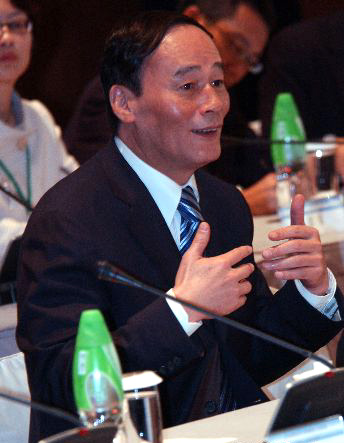| Tools: Save | Print | E-mail | Most Read |
| Beijing Boosts Public Transport |
| Adjust font size: |
The Beijing municipal government has earmarked 4 billion yuan (US$500 million) to boost public transport next year in a bid to ease traffic congestion in the city with over 2.8 million motor vehicles. Part of the fund will be used to lower fares on air-conditioned buses, said Beijing Mayor Wang Qishan.
Hundreds of air-conditioned buses are in service in Beijing, but many empty seats even in peak hours because the minimum fare is two yuan (US$0.25), double that of buses without air-conditioning. Many commuters prefer non-air-conditioned buses, because in the most economic of circumstances, they can take up to 140 rides a month for 40 yuan (US$5). As a result, overcrowded buses with more passengers attempting to squeeze aboard sometimes block the road and bring the rush-hour traffic to a standstill. "We'll have to make air-conditioned buses more affordable and divert passengers from non-air-conditioned buses to speed up the traffic," Wang said at a Beijing-Hong Kong economic cooperation symposium that opened Wednesday in Hong Kong. By speeding up public transport, the municipal authority hopes more private car owners will choose to use buses instead. Beijing has special bus lanes on most downtown roads and is considering more express lanes on arteries linking the city center and high-density residential areas in the outer rims over next two to three years. By 2010, the government hopes 40 percent of Beijingers will use public transport as their primary means of transportation, up from 28 percent in 2005. The city is also working to expand its urban rail network, which will extend 270 kilometers and aims to carry 25 to 30 percent of commuters by 2010. Road traffic was surprisingly easy even in the busiest areas when Beijing imposed a six-day ban on over 490,000 government vehicles and advised private drivers to take buses to make way for a summit meeting between Chinese and African leaders early this month. Unfortunately, congestion resumed as the ban ended on November 7th. Urban road transport has reached crisis point in Beijing, with 90 percent of roads operating at full capacity and little room for expansion, according to a recent survey by the city's road traffic management bureau. An additional 320,000 motor vehicles hit Beijing's roads in the first 10 months of this year, it said. Of the 15 million urban residents, 4.13 million have driving licenses. The municipal authority forecast in 1993 that it would contain two million cars by 2010, but that target was met in August 2003. (Xinhua News Agency November 16, 2006) |
| Tools: Save | Print | E-mail | Most Read |
 |
| Related Stories |
|
Product Directory China Search |
Country Search Hot Buys |
